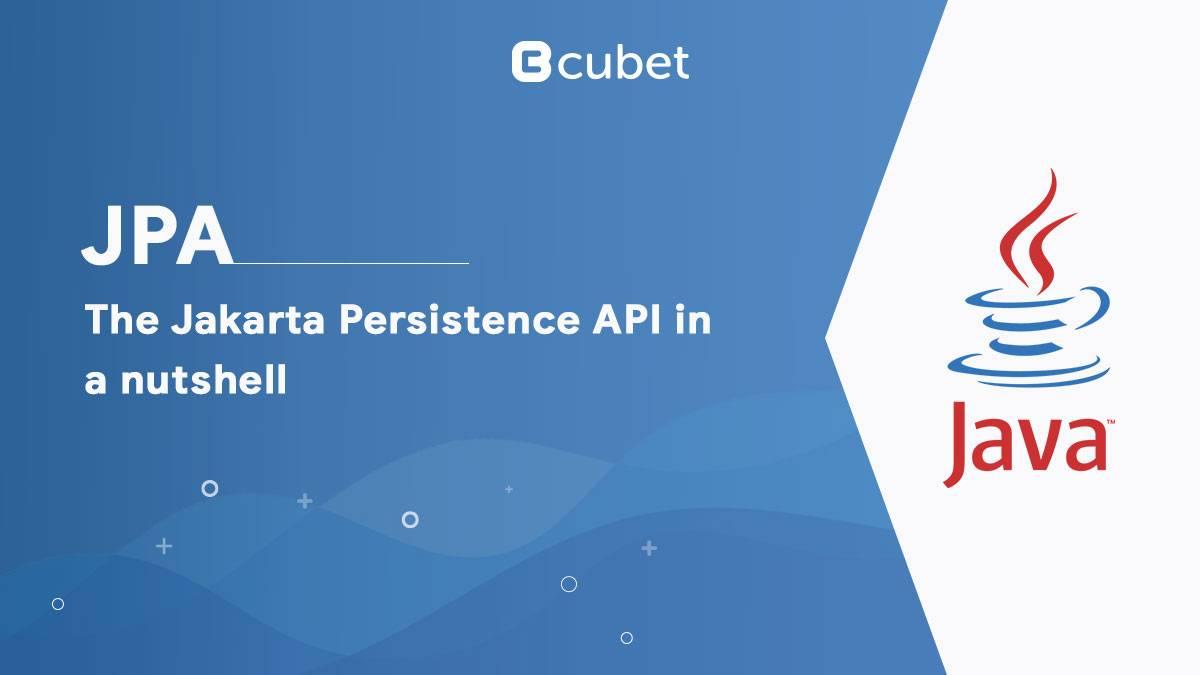JPA: The Jakarta Persistence API in a Nutshell

The Jakarta Persistence API (JPA) is one of the cornerstones of the Java Enterprise Edition. Any application that wants to be part of the Java enterprise software stack will use it. But not many people understand what JPA is or is used for. In this blog, we will be looking at JPA in a nutshell.
Introduction to JPA
JPA is the Java Persistence API, a specification for storing, accessing, and managing data in a Java EE environment. It is a part of the Java EE platform. JPA is a standard for Object-Relational Mapping (ORM) in the Java industry. ORM is the process of mapping data from an object-oriented domain model to a relational database. JPA is a tool for doing this in a Java EE environment.
It defines a set of interfaces and classes. It does not provide an implementation. This is why you need a JPA provider. JPA provider is a library that implements the JPA specification. The most popular JPA providers are Hibernate, EclipseLink, and OpenJPA.
JPA is used in Java EE applications to manage data in a relational database. JPA can be used in any Java EE application, but it is most commonly used in web applications. JPA is used to map Java objects to database tables. It can also be used to map Java objects to XML documents.
It is a powerful tool for managing data in a Java EE application. It is easy to use and has a wide range of features.
Writing your own ORM
If you’re looking to develop your ORM with JPA, there are a few things you’ll need to keep in mind.
- First, you’ll need to be familiar with the JPA specification.
- Second, you’ll need to have a good understanding of how ORM frameworks work.
- Finally, you’ll need to be able to write code that is both efficient and easy to maintain.
With that said, let’s look at how to write your own ORM with JPA. First, you’ll need to create a class that implements the javax.persistence.EntityManagerFactory interface. The class will be responsible for initializing your ORM framework and creating EntityManager instances.
Next, you’ll need to create a class that implements the javax.persistence.EntityManager interface. This class will be responsible for managing entities and providing CRUD operations. Finally, you’ll need to create a class that implements the javax.persistence.Query interface. This class will be responsible for executing queries against the database.
Now that you have the basic structure, you’ll need to start fleshing out the details.
- First, you’ll need to write code to map entities to the database. It can be done using the @Entity and @Table annotations.
- Next, you’ll need to write code to map attributes to columns in the database. It can be done using the @Column annotation.
- Finally, you’ll need to write code to map relationships between entities. It can be done using the @OneToOne, @OneToMany, and @ManyToMany annotations.
Once you have the mapping code in place, you’ll need to write code actually to perform CRUD operations. For each operation, you’ll need to write a method in the EntityManager class.
These methods will take an Entity object as a parameter and use the appropriate JPA API calls to operate.
That’s all there is to write your own ORM with JPA. With a little effort, you can easily develop a fully functioning ORM framework that can be used in any Java application.
The Relationship Between JPA & Hibernate
JPA is a specification that provides a uniform API for managing relational data in Java applications. Hibernate is a popular implementation of JPA that offers additional features and benefits.
JPA and Hibernate are very closely related. Hibernate is a popular implementation of JPA that offers additional features and benefits.
JPA is a specification that provides a uniform API for managing relational data in Java applications.
Hibernate extends JPA by offering additional features such as support for advanced query options and caching.
While JPA is an excellent standard for data access, Hibernate provides additional features and benefits that make it a popular choice for many Java applications.
Conclusion
In this Blog, you’ve learned how to use the JPA and how it can be used in any Java EE application. You’ve also learned how to extend JPA and create your own ORM framework. We hope this post was helpful. If you’d like to learn more about JPA, check out our post on JPA and Hibernate.